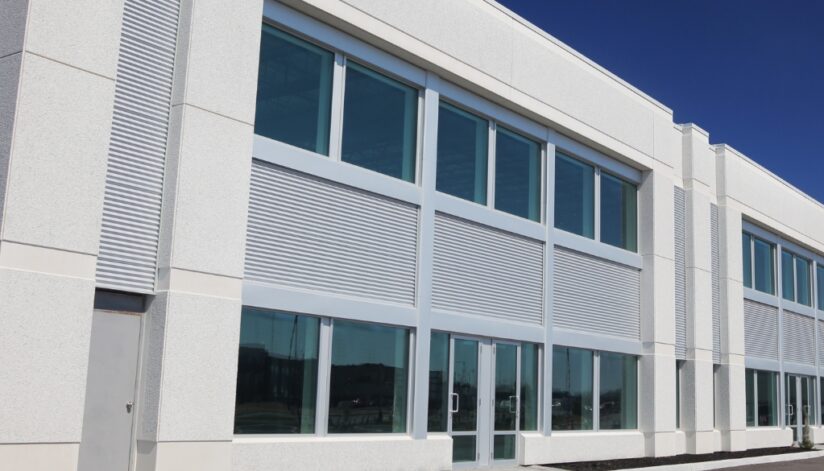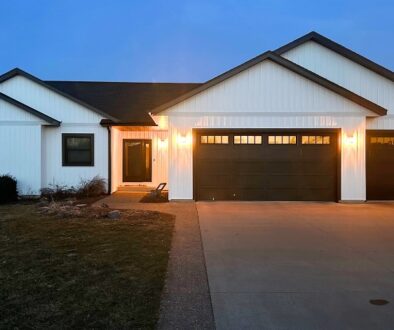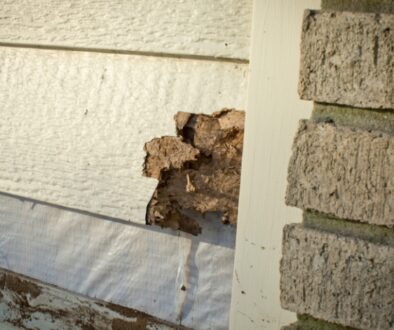How To Choose Between Horizontal And Vertical Siding For Commercial Buildings
Choosing the right siding for your commercial building is an important decision. The orientation of the siding—whether horizontal or vertical—affects both aesthetics and performance, particularly in challenging climates like Wisconsin’s. Here’s a closer look at the pros and cons of each option from our experts at Ledegar Roofing to help you decide which is best for your property in the Coulee Region.
Horizontal Siding: Classic And Cost-Effective
Horizontal siding is the traditional choice for many commercial buildings and remains popular for its clean, familiar look. It provides a sense of balance and continuity, working well with a wide variety of architectural styles.
Pros Of Horizontal Siding
- Familiar Aesthetic: Horizontal siding is a classic choice that complements many building designs. It’s often preferred for its streamlined, traditional look.
- Lower Cost: Horizontal siding tends to be easier to install and thus can be more affordable compared to vertical siding, with labor costs typically being lower.
- Simple Maintenance: This siding orientation generally requires less specialized upkeep, as most contractors are well-versed in its installation and maintenance.
Cons Of Horizontal Siding
- Moisture Retention: In areas with heavy rainfall, water can become trapped in the overlapping edges of horizontal siding. Over time, this may lead to issues like rot or mold.
- Wind Vulnerability: In climates with strong winds, horizontal siding may be more susceptible to damage, as wind can push rain into the overlaps, causing leaks.
Vertical Siding: Modern And Durable
Vertical siding offers a modern and distinct appearance. While it may be less common, it’s becoming increasingly popular, especially for commercial properties looking to stand out.
Pros Of Vertical Siding
- Unique Appearance: Vertical siding gives buildings a bold, modern look that can make a property stand out from its surroundings.
- Better Water Drainage: One of the primary benefits of vertical siding is its ability to shed water more effectively. The vertical orientation allows rain and snow to flow naturally off the panels, reducing the likelihood of water damage.
- Increased Durability: Because of its efficient drainage, vertical siding is typically more resistant to moisture-related issues like rot, mildew, and mold, making it a great option for areas prone to rain or snow.
Cons Of Vertical Siding
- Higher Installation Cost: Vertical siding can be more challenging to install, requiring additional materials such as furring strips to ensure proper alignment. This complexity can result in higher installation costs.
- Limited Availability: Although vertical siding is gaining popularity, it can still be harder to source compared to horizontal options. Some suppliers may offer fewer material choices, which could limit design flexibility.
Performance In Different Climates
When choosing between horizontal and vertical siding, climate should be one of the biggest factors. In colder climates with heavy snowfall, vertical siding’s superior drainage may help prevent damage caused by ice and snow buildup. In more temperate regions, either style may be suitable, but it’s important to consider how rain and moisture are managed, particularly in high-humidity areas.
In the Coulee Region, where winters are harsh and summers can be humid, the choice of siding orientation can have a significant impact on the longevity of your commercial property. Vertical siding, with its moisture-resistant properties, may offer better protection against the elements in the region’s diverse climate.
Why Invest In Quality Commercial Siding
Whether you opt for horizontal or vertical siding, investing in high-quality commercial siding provides several long-term benefits:
- Improved Energy Efficiency: High-quality siding acts as an additional layer of insulation, helping to reduce energy costs by maintaining better indoor temperature control.
- Enhanced Curb Appeal: New siding dramatically enhances the appearance of a commercial building, creating a more polished, professional look that can attract tenants and customers.
- Increased Durability: Quality siding materials, particularly when properly installed by professionals like Ledegar Roofing, can resist weather-related damage and require fewer repairs, which lowers long-term maintenance costs.
- Higher Property Value: Well-maintained siding adds value to commercial properties by boosting curb appeal and signaling that the building is well cared for.
Conclusion
Choosing between horizontal and vertical siding for your commercial building comes down to factors like aesthetic preference, installation cost, and long-term performance. Both orientations offer distinct advantages, but the best option depends on your specific needs and the climate in which the building is located. By investing in high-quality siding, you can protect your commercial property from the elements while enhancing its overall appearance and value.
The Ledegar Roofing Advantage
At Ledegar Roofing, we understand the importance of selecting the right siding for your commercial building. Whether you’re interested in the classic look of horizontal siding or the modern appeal and durability of vertical siding, we offer expert advice and installation services tailored to your unique needs. With our knowledge of Wisconsin’s climate and commitment to quality, we’re here to help you make the best decision for your commercial property. Contact us today to learn more about our commercial siding services in La Crosse, Wisconsin and surrounding areas.




